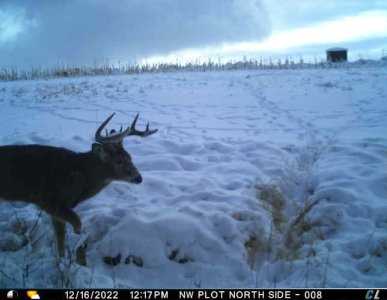I hear ya. But explain the 5 year old 8 point that goes 130" when his entire life his home base has been a property that had access to ag, superior bedding, all hte browse he can handle, low pressure, etc
I'm not being a smartazz, I'm legitimately asking. We're working harder to get that deer to 5 than a lot of other guys are to get bigger deer to 5.
Also, he's a fully mature body too. A steer on the hoof, just didn't put it into bone.
Nothing to explain, really.
Some deer just don't have "it" and they never will.
This is how I've begun to look at it.
For any deer to express its full potential, it first needs to reach maturity. If all bucks reached maturity, probably 25% would reach 150"+ in most areas. (Totally a guess by me). That's why age is the most important thing, because we are already fighting a losing battle against the averages. My guess is only 5-10% would reach 170".
Deer nutrition can be somewhat cyclical depending on a lot of conditions, but using your example, let's say all bucks in this study have access to the same high quality ag and browse. Now we look at drought rates, winter stress, predators, etc. I believe this can fluctuate year over year antler growth rates.
The more we learn about genetics of a wild herd, the more answers we get about the father not being nearly as important as originally suspected. This is something I personally struggle with for a few reasons, but primarily this one - if you do everything right with your nutrition and herd health, habitat, etc...then you should give yourself the best odds for a healthy buck fawn who will express his fullest potential, right? Awesome. Great job! Except science has taught us that the mother of that buck will disperse him from the heard 1-10 miles away to avoid any incest issues. Now we've done every thing that we as habitat managers could have done to give our deer the best chance at expressing their full potential so that our neighbors (1-10 miles away) can hunt them if/when they reach that potential.
The only way to limit or stop the dispersal is to harvest the momma doe. Personally if I see a momma doe with two buck fawns, I will try to harvest her every single time.
